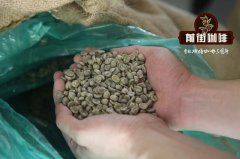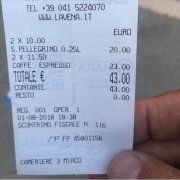Starbucks takes dangerous moves to join the Chinese Coffee takeout War

Professional coffee knowledge exchange more coffee bean information please follow the coffee workshop (Wechat official account cafe_style)
Defeated by the new retail trend, Alibaba CEO Johnson (4 from right) and Starbucks CEO Zhang Yong (4 from left) hand in hand to deliver services. "China is the fastest growing and innovative market for Starbucks," Johnson said. "
On August 2nd, Starbucks announced that it had reached a new retail strategic cooperation with Alibaba, which would focus on users and develop an omni-channel model. In September, 150 Starbucks stores in Beijing and Shanghai provided delivery services. In the future, consumers can also place orders in App under Alibaba, such as Tmall and he Ma Xiansheng.
Wang Jingying, chief executive of Starbucks China, explained that Starbucks will expand from the "third space" of the original physical store to the fourth space service, including App reservation delivery, mobile payment and other digital experience. "China has become the first market in the world for Starbucks to achieve a full-space experience!" She said.
For the first time, Starbucks has gone to "new retail", as the New York Times points out, in part to fend off competition from Luckin Coffee.
Relying on subsidies and the expansion model of new retail, Luckin Coffee, the "Little Blue Cup" that spent 1 billion yuan on the market, displayed more than 600 stores and pushed delivery services in half a year, an area that Starbucks could not touch. In addition, Lucky even announced that there would be 2000 stores by the end of the year, catching up with Starbucks's current 3400, leaving Starbucks like a thorn in its back.
Stand firm in China by physical experience
However, it gambles on brand positioning across new retail.
Starbucks, by contrast, is not doing well. Starbucks' same-store sales in China fell 2% in the third quarter from the previous quarter, the first decline in nine years, which undoubtedly dealt a heavy blow to Starbucks, which will close 150 direct stores in big US cities as the US market grows and declines. China, regarded as the savior of Starbucks, is not only the fastest growing overseas market, but also the largest overseas market with the largest number of stores, accounting for more than 10% of the world's revenue.
Starbucks, which entered China in its 19th year, turned to new retail. This is probably the most unusual decision in its history, because it is very different from the original logic of store expansion.
Nearly half a century, Starbucks started from the physical storefront, is good at creating space and atmosphere, with the "third space" value as the core of the brand. But the new retail, adhering to the principle of where the users are, where the products and stores are, delivery has become a necessary service, which makes China's current new retail coffee industry pursue not product advantages, but convenience and speed.
In other words, including brand positioning, vision, and even the cost of implementation, coffee production process, etc., are all two very different routes. With limited resources, Starbucks aims to expand 500 stores a year on the one hand, and new retail on the other. Is this expanding new services or deviating from existing advantages?
Wang Zucen, president of Wang Li Coffee, known as the "coffee king of China," believes that if Starbucks wants to go into new retail, it will have to rethink the meaning of physical stores and strike a balance between storefront and delivery services in terms of the allocation of manpower and resources.
But in retrospect, Starbucks was able to gain a foothold in China because of the "experience economy" brought about by the store. When Starbucks entered China in 1999, Starbucks, like other foreign companies, experienced the pain of localization, and even though it was criticized in the process that it was too slow to localize, and it did not offer payment services such as Wechat until last year, it continued its ambition to expand China.
In the past two years, when McDonald's sold the right to operate the Chinese market and Coca-Cola sold its bottling business in China, Starbucks bucked the trend and became a special case in the western catering industry. Howard Schultz, the founder of Starbucks, once read to the media: "our success is obviously based on the experience of our store." He even predicted that China will overtake the United States to become the largest market. At the end of last year, he unveiled the world's largest Starbucks smart store with Alibaba founder Jack Ma in Shanghai, demonstrating Starbucks' store advantages.
Now that the two sides are working together again, Starbucks wants to get close to Chinese consumers through online and delivery services, but may pay the price.
"the left hand wants to play at the high end, while the right hand plays at the low end. It is now a strong self-contradiction." Ding Xuewen, managing partner of Shanghai Treasury Venture Capital, said that Starbucks' entry into China is threatened by new technology rivals and can only gamble. "but this is'a dog bites a dog, a mouthful of hair', and the risk is quite high."
Hit a low price with a high price
It is questioned that it has fallen into a competitive trap.
He explained that the new retail coffee is hot, but no one has released profit figures, and it is impossible to confirm whether consumers are loyal customers or attracted by subsidies. Starbucks is likely to fall into a competitive trap when it chooses to fight at this time. In addition, compared with most of China's delivery coffee is low-priced, Starbucks is a high-priced brand, coupled with delivery freight, the price is too high may affect the willingness to spend. "if Starbucks uses a price reduction strategy when giving away in order to attract customers, it will be really stupid and it's over!" Ding Xuewen said.
Qiu Yijia, associate dean of the School of Business of National Chengchi University, has a different interpretation of this. He believes that Starbucks has established a certain brand strength, and this new retail strategy or delivery is a Sinicized display. "Starbucks is in China, delivery is the only way. If you don't do it, you can only wait to be eliminated. " At present, the only variable is the quality of delivery coffee, which has to be overcome by technology, he said.
This step of Starbucks seems to put itself in a dilemma between business growth and brand spirit. But is it really necessary? Don't forget that Luckin Coffee's entrepreneurial opportunity is due to the fact that Starbucks is full of queues. Is it possible for Starbucks to improve the queuing problem at stores? Or develop a digital experience model based on the store market? Maybe there's still a long way to go.
Starbucks has the first experience, playing new retail with Alibaba.
1. Ele.me (delivery platform)
In mid-September, 150 Starbucks in key business districts in Beijing and Shanghai
Delivery was carried out on a trial basis, covering more than 2000 by the end of the year.
two。 Box Ma Xiansheng (O2O supermarket)
Create 600 "take-away star chefs"
Provide free coffee service for half an hour at the earliest
3. Tmall (shopper domain)
Work together to build Starbucks' online wisdom store.
(note: ele.me, he Ma Xiansheng and Tmall are Alibaba's enterprises)
Important Notice :
前街咖啡 FrontStreet Coffee has moved to new addredd:
FrontStreet Coffee Address: 315,Donghua East Road,GuangZhou
Tel:020 38364473
- Prev

Which brand of Brazilian coffee beans is good? Brazilian coffee brand export mode Brazilian coffee pilao?
Professional coffee knowledge exchange more coffee bean information please follow the coffee workshop (Wechat official account cafe_style) first of all, there are two main kinds of coffee beans in Brazil, Arabica arbica and Robusta robusta. 1. Arabica species (caf arbica) Arabica species, that is, small seed species. The country of origin is the Ethiopian plateau, and coffee was used for a long time before the 15th century.
- Next

Venice Plaza, 2 cups of coffee and 2 cups of water charge 300 yuan for tourists, and the coffee shop has an explanation.
Professional coffee knowledge exchange more coffee bean information please follow the coffee workshop (Wechat official account cafe_style) the Piazza San Marco in Venice, Italy is a must for tourists, many people will sit down and drink coffee and enjoy the leisurely afternoon. But for Chilean tourist Juan Carlos Bustamente, his experience is not very pleasant, because of coffee.
Related
- What brand of black coffee is the most authentic and delicious? what are the characteristics of the flavor of the authentic Rose Summer Black Coffee?
- Introduction to the principle and characteristics of the correct use of mocha pot A detailed course of mocha pot brewing coffee is described in five steps.
- Which is better, decaf or regular coffee? how is decaf made?
- How much is a bag of four cat coffee?
- How about four Cat Coffee or Nestle Coffee? why is it a cheap scam?
- Which is better, Yunnan four Cats Coffee or Nestle Coffee? How about cat coffee? is it a fake scam? why is it so cheap?
- How about Cat Coffee? what grade is a hoax? which instant coffee tastes better, four Cat Coffee, Nestle Coffee or G7 coffee?
- Process flow chart of coffee making-Starbucks coffee making process what coffee tastes good at Starbucks
- The top ten best coffee beans in the world Rose summer coffee or Tanzanian coffee tastes good
- Yunnan four cat coffee is good to drink?_four cat coffee is a big brand? four cat blue mountain coffee is fake?

